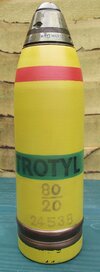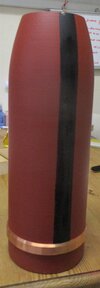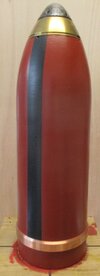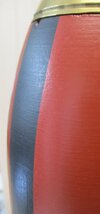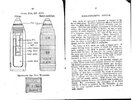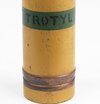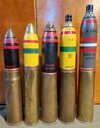Hello all,
Been working on this 18 Pdr restoration lately. It was in fairly good nick with a touch of pitting on its base so it was a good candidate.
Painting went well, hand brushed on a turntable, bands too.
However, it all went South when I started on the stencilling....
TROTYL turned out relatively ok, if not a bit chunky.
The filling station and ratio No.s.... well...cutting stencils for these was nigh on impossible so I hand drew them on. Not the best effort. In fact they looked bloody awful.
But I left them anyway and applied some wax, which almost wiped the stencils off. This wax I've always used for this application so not sure what's gone wrong here.
But as I wiped the crud away, the stencils had faded to a rather pleasing aged look.
Bob Ross might say a 'happy accident'? I'm in two minds , but siding with 'It looks quite effective'?
I've attempted to weather the rest of the shell to suit.
Just wondered what other members views might be?
Strip down and start from scratch? Or leave as is?
Many thanks in advance!
Been working on this 18 Pdr restoration lately. It was in fairly good nick with a touch of pitting on its base so it was a good candidate.
Painting went well, hand brushed on a turntable, bands too.
However, it all went South when I started on the stencilling....
TROTYL turned out relatively ok, if not a bit chunky.
The filling station and ratio No.s.... well...cutting stencils for these was nigh on impossible so I hand drew them on. Not the best effort. In fact they looked bloody awful.
But I left them anyway and applied some wax, which almost wiped the stencils off. This wax I've always used for this application so not sure what's gone wrong here.
But as I wiped the crud away, the stencils had faded to a rather pleasing aged look.
Bob Ross might say a 'happy accident'? I'm in two minds , but siding with 'It looks quite effective'?
I've attempted to weather the rest of the shell to suit.
Just wondered what other members views might be?
Strip down and start from scratch? Or leave as is?
Many thanks in advance!

